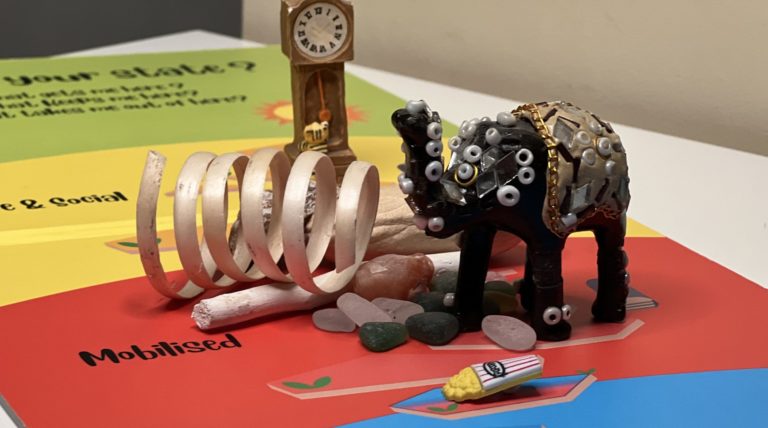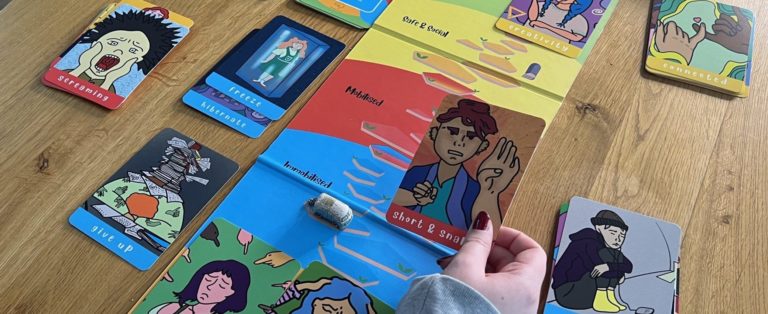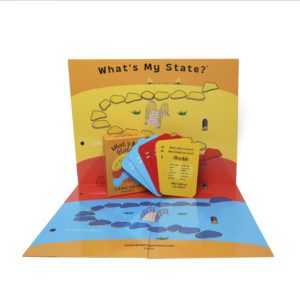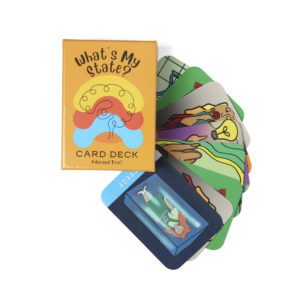The metaphor of the Polyvagal Track has been created by Yasmin Shaheen-Zaffar a BACP, UK therapist who specialises in stress and trauma-informed care and is an advocate of Dr Stephen Porges polyvagal theory.
She has developed a metaphorical framework called the “Polyvagal Track” to explain the polyvagal hierarchy and how it relates to the emotional and social development of young people and adults.
The Polyvagal hierarchy is a concept in neuroscience developed by Dr. Stephen Porges, which describes how the nervous system responds to different situations, and how this response affects our behavior and emotions. It is based on the understanding that our nervous system is not a single system, but is instead composed of several interconnected subsystems that evolved over time to deal with different challenges.
The Polyvagal track emphasises the importance of gaining awareness of how our behaviours are linked to the physiological different states. The track provides a tangible, visual representation of the “movement between different states” of emotional arousal and normalises this experience for young people and adults alike.
Again figures or models can be put on the track to show a physical representation of a situation/ problem / challenge.
This creative approach emphasises the autonomy of the young person, gently encouraging them to explore their state, thestories and senstations linked to it and move between different markers on the track.
Its aim is to emphasise not only the movement of energy but also exploring with the users how it is possible to take control of their responses to stress.
This can be especially helpful for teenagers who may be struggling with complex emotions and need support in navigating their emotional landscape. The Polyvagal Teen® track provides a useful tool for therapists, young people, parents and caregivers to explore and understand their emotions, develop skills for regulation and nurturing emotional literacy.

Hey all, thanks for taking the time to read this blog post. I launched a physical version of the polyvagal track in September 2022 – as a prototype and to test the market.
I thought it was a great idea to visualise the journey of our nervous system – especially as a creative therapist. But then I’m also neuro divergent so I seem to have lots and lots of ideas not all of them by any stretch of the imagination great ideas. So I was a little sure if it would be helpful to others.
I’ve now sold out of the first prototype and have an updated version in production due out. It feels pretty nerve wracking as I have ordered a large number and in a couple of months (around May ’23 time) they will be available on Amazon as well as on our website in the following countries.
I’d love to know your thoughts and feedback and currently I have a number of worksheets available of the track which can be used with adults and young people.

The Polyvagal hierarchy is a concept in neuroscience developed by Dr. Stephen Porges, which is a model to describe how the nervous system responds to different situations, and how this response affects our behavior and emotions. It is based on the understanding that our nervous system is not a single system, but is instead composed of several interconnected subsystems that evolved over time to deal with different challenges.
At the core of the Polyvagal hierarchy is the autonomic nervous system (ANS), which controls many involuntary functions in the body, including heart rate, digestion, and breathing.
The ANS has two branches: the sympathetic nervous system (SNS) and the parasympathetic nervous system (PNS).
The SNS is responsible for the “fight or flight” response, which prepares the body for action in response to a perceived threat, while the PNS is responsible for the “rest and digest” response, which promotes relaxation and recovery.
It is normal to move in between the different states throughout the day depending on what are nervous system experiences.
The Polyvagal hierarchy provides a framework for understanding how the nervous system responds to stress and how this response affects our emotions and behavior. By understanding this hierarchy, we can learn to regulate our nervous system and better manage stress and anxiety in our daily lives.
Deb Dana is a clinician and consultant specializing in complex trauma and the author of the book “The Polyvagal Theory in Therapy.”
She has developed a metaphorical framework for understanding the three parts of the autonomic nervous system (ANS) and how they influence our responses to stress and trauma. This framework is commonly referred to as “the ladder.”
The ladder metaphor describes the ANS as a ladder with three levels, each corresponding to a different state of the nervous system.
The bottom rung represents the dorsal vagal system, which is responsible for our freeze response. This is the most primitive level of the ANS and is activated when we feel overwhelmed or threatened.
The middle rung represents the sympathetic nervous system, which is responsible for our fight or flight response. This level is activated when we perceive danger or a threat to our safety. The top rung represents the ventral vagal system, which is responsible for our social engagement system. This level is activated when we feel safe and connected with others.



With a passion for improving the emotional wellbeing of young people, adults and parents, she is the founder and creator of Polyvagal Teen®, she has developed an innovative approach to helping teens recognise and manage stress and anxiety through becoming “Polyvagal Aware”. In addition, Yasmin is also the founder of World Let’s Stop Shouting Day, which aims to promote peaceful communication and reduce conflict and aggression in our daily interactions. Neurosloth™ and The Hearts Whisper®
She also runs a small private practice providing counselling and neurofeedback to young people and adults in North Yorkshire.
